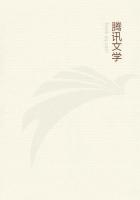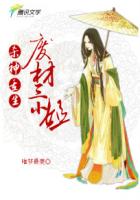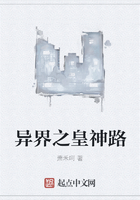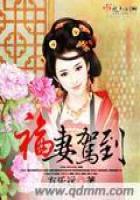A HOUSE WHICH NO LONGER EXISTS AT THE CORNER OF A STREETWHICH NO LONGER EXISTS IN A PARIS WHICH NO LONGER EXISTSFew persons in the present day know how plain and unpretentious were the dwellings of the burghers of Paris in the sixteenth century, and how simple their lives. Perhaps this simplicity of habits and of thought was the cause of the grandeur of that old bourgeoisie which was certainly grand, free, and noble,--more so, perhaps, than the bourgeoisie of the present day. Its history is still to be written; it requires and it awaits a man of genius. This reflection will doubtless rise to the lips of every one after reading the almost unknown incident which forms the basis of this Study and is one of the most remarkable facts in the history of that bourgeoisie. It will not be the first time in history that conclusion has preceded facts.
In 1560, the houses of the rue de la Vieille-Pelleterie skirted the left bank of the Seine, between the pont Notre-Dame and the pont au Change. A public footpath and the houses then occupied the space covered by the present roadway. Each house, standing almost in the river, allowed its dwellers to get down to the water by stone or wooden stairways, closed and protected by strong iron railings or wooden gates, clamped with iron. The houses, like those in Venice, had an entrance on /terra firma/ and a water entrance. At the moment when the present sketch is published, only one of these houses remains to recall the old Paris of which we speak, and that is soon to disappear;it stands at the corner of the Petit-Pont, directly opposite to the guard-house of the Hotel-Dieu.
Formerly each dwelling presented on the river-side the fantastic appearance given either by the trade of its occupant and his habits, or by the originality of the exterior constructions invented by the proprietors to use or abuse the Seine. The bridges being encumbered with more mills than the necessities of navigation could allow, the Seine formed as many enclosed basins as there were bridges. Some of these basins in the heart of old Paris would have offered precious scenes and tones of color to painters. What a forest of crossbeams supported the mills with their huge sails and their wheels! What strange effects were produced by the piles or props driven into the water to project the upper floors of the houses above the stream!
Unfortunately, the art of genre painting did not exist in those days, and that of engraving was in its infancy. We have therefore lost that curious spectacle, still offered, though in miniature, by certain provincial towns, where the rivers are overhung with wooden houses, and where, as at Vendome, the basins, full of water grasses, are enclosed by immense iron railings, to isolate each proprietor's share of the stream, which extends from bank to bank.
The name of this street, which has now disappeared from the map, sufficiently indicates the trade that was carried on in it. In those days the merchants of each class of commerce, instead of dispersing themselves about the city, kept together in the same neighborhood and protected themselves mutually. Associated in corporations which limited their number, they were still further united into guilds by the Church. In this way prices were maintained. Also, the masters were not at the mercy of their workmen, and did not obey their whims as they do to-day; on the contrary, they made them their children, their apprentices, took care of them, and taught them the intricacies of the trade. In order to become a master, a workman had to produce a masterpiece, which was always dedicated to the saint of his guild.
Will any one dare to say that the absence of competition destroyed the desire for perfection, or lessened the beauty of products? What say you, you whose admiration for the masterpieces of past ages has created the modern trade of the sellers of bric-a-brac?
In the fifteenth and sixteenth centuries the trade of the furrier was one of the most flourishing industries. The difficulty of obtaining furs, which, being all brought from the north, required long and perilous journeys, gave a very high price and value to those products.
Then, as now, high prices led to consumption; for vanity likes to override obstacles. In France, as in other kingdoms, not only did royal ordinances restrict the use of furs to the nobility (proved by the part which ermine plays in the old blazons), but also certain rare furs, such as /vair/ (which was undoubtedly Siberian sable), could not be worn by any but kings, dukes, and certain lords clothed with official powers. A distinction was made between the greater and lesser /vair/. The very name has been so long disused, that in a vast number of editions of Perrault's famous tale, Cinderella's slipper, which was no doubt of /vair/ (the fur), is said to have been made of /verre/(glass). Lately one of our most distinguished poets was obliged to establish the true orthography of the word for the instruction of his brother-feuilletonists in giving an account of the opera of the "Cenerentola," where the symbolic slipper has been replaced by a ring, which symbolizes nothing at all.
Naturally the sumptuary laws about the wearing of fur were perpetually infringed upon, to the great satisfaction of the furriers. The costliness of stuffs and furs made a garment in those days a durable thing,--as lasting as the furniture, the armor, and other items of that strong life of the fifteenth century. A woman of rank, a seigneur, all rich men, also all the burghers, possessed at the most two garments for each season, which lasted their lifetime and beyond it. These garments were bequeathed to their children. Consequently the clause in the marriage-contract relating to arms and clothes, which in these days is almost a dead letter because of the small value of wardrobes that need constant renewing, was then of much importance.















